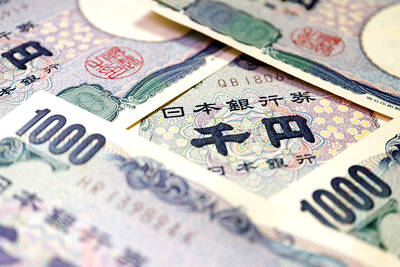Eyeing the lucrative handheld electronics market, US chipmaker Qualcomm Inc is investing nearly US$1 billion in a Mirasol display plant in Taiwan, the Ministry of Economic Affairs said yesterday.
The factory will occupy seven hectares, and be located in Longtan (龍潭), the site of the Hsinchu Science Park.
This investment follows Qualcomm’s joint venture with local electronics component maker Cheng Uei Precision Industry Co (正崴) in 2008 to set up Sollink Inc (高強光電), which makes handset displays using Qualcomm’s Mirasol technology.
Qualcomm CEO Paul Jacobs said in September that the company expects “significant growth” out of Mirasol displays.
The new plant will produce smaller displays using power--efficient Mirosal technology for handheld devices such as electronic readers.
Those displays, mostly smaller than 5.7 inches, consume less power than LCD panels of a similar size and active matrix organic light emitting displays (AMOLED).
Jacobs said the potential overall market for displays similar to Qualcomm’s Mirasol screens would be worth about US$11 billion in annual sales. He said in September that Qualcomm plans to sharply cut the price of its Mirasol technology to develop a bigger market.
Last August, Northern Taiwan Science Park Administration -director-general Randy Yen (顏宗明) said Qualcomm was going to invest NT$63 billion (US$2.2 billion) in a Mirosal plant by leasing a 5.1-hectare plot from the government.
The so-called fifth-generation plant, which contractors began to build late last year, will process a maximum of 50,000 sheets of the raw materials used to make the displays per month, Yen said.
The ministry yesterday said Qualcomm had evaluated other possible sites, including China, South Korea, Japan and Singapore, but decided to invest in Taiwan because of the massive pool of -technology talent here.
“Qualcomm has established a rapport with Taiwanese information, communications and technology firms, and it is aggressively involved in the development of Mirasol displays in view of the rise of smart handhelds such as e--readers,” the statement said.
The ministry said the new plant would bolster local employment opportunities and enhance Taiwan’s competitiveness in the display manufacturing industry.Chimei Innolux Corp (奇美電子) and AU Optronics Corp (友達光電), the world’s third and fourth-largest LCD makers, are also based in Taiwan.
Major Taiwanese technology firms, including Acer Inc (宏碁), Asustek Computer Inc (華碩電腦), BenQ Corp (明基) and Delta Electronics Inc (台達電), have introduced e-readers that allow users to read books and magazines downloaded from the Internet.
Qualcomm established a presence in Taiwan in 2003 by opening an office in Taipei and another in Hsinchu.
The Taipei office is the regional marketing and sales center for Qualcomm’s CDMA Technologies division, while the Hsinchu office supports Qualcomm’s MEMS Technologies division and leads the transfer of its display technology to manufacturing partners throughout Asia, according to its Web site.

AI TALENT: No financial details were released about the deal, in which top Groq executives, including its CEO, would join Nvidia to help advance the technology Nvidia Corp has agreed to a licensing deal with artificial intelligence (AI) start-up Groq, furthering its investments in companies connected to the AI boom and gaining the right to add a new type of technology to its products. The world’s largest publicly traded company has paid for the right to use Groq’s technology and is to integrate its chip design into future products. Some of the start-up’s executives are leaving to join Nvidia to help with that effort, the companies said. Groq would continue as an independent company with a new chief executive, it said on Wednesday in a post on its Web

RESPONSE: The Japanese Ministry of Finance might have to intervene in the currency markets should the yen keep weakening toward the 160 level against the US dollar Japan’s chief currency official yesterday sent a warning on recent foreign exchange moves, after the yen weakened against the US dollar following Friday last week’s Bank of Japan (BOJ) decision. “We’re seeing one-directional, sudden moves especially after last week’s monetary policy meeting, so I’m deeply concerned,” Japanese Vice Finance Minister for International Affairs Atsushi Mimura told reporters. “We’d like to take appropriate responses against excessive moves.” The central bank on Friday raised its benchmark interest rate to the highest in 30 years, but Bank of Japan Governor Kazuo Ueda chose to keep his options open rather than bolster the yen,

Even as the US is embarked on a bitter rivalry with China over the deployment of artificial intelligence (AI), Chinese technology is quietly making inroads into the US market. Despite considerable geopolitical tensions, Chinese open-source AI models are winning over a growing number of programmers and companies in the US. These are different from the closed generative AI models that have become household names — ChatGPT-maker OpenAI or Google’s Gemini — whose inner workings are fiercely protected. In contrast, “open” models offered by many Chinese rivals, from Alibaba (阿里巴巴) to DeepSeek (深度求索), allow programmers to customize parts of the software to suit their

Global server shipments are expected to surge to 15 million units next year, from 4 million units this year, with artificial intelligence (AI) servers accounting for about 30 percent, driven by massive capital spending by major cloud service providers, the Market Intelligence and Consulting Institute (MIC) said on Thursday last week. Major cloud service providers — including Google’s parent company Alphabet Inc, Microsoft Corp, Amazon.com Inc and Meta Platforms Inc — are projected to budget US$450 million for capital expenditure next year, up from US$400 million this year, MIC ICT [information and communications technology] Industry Research Center director Edward Lin